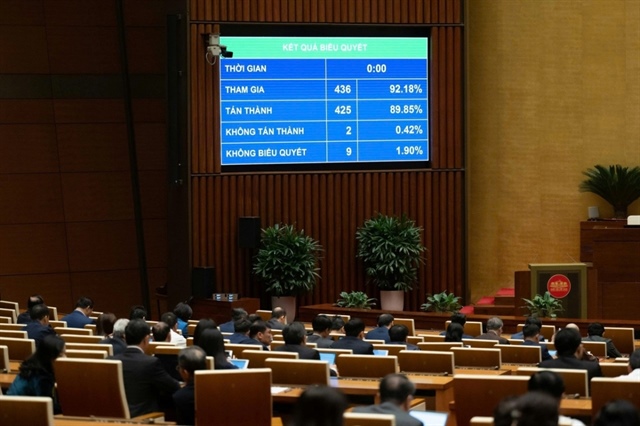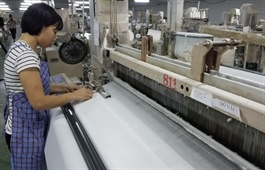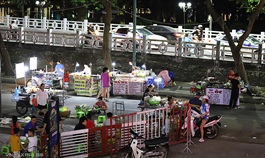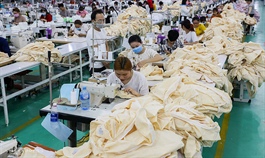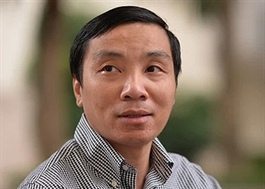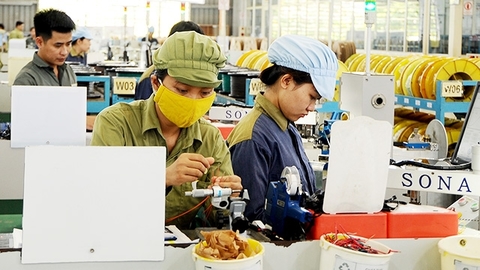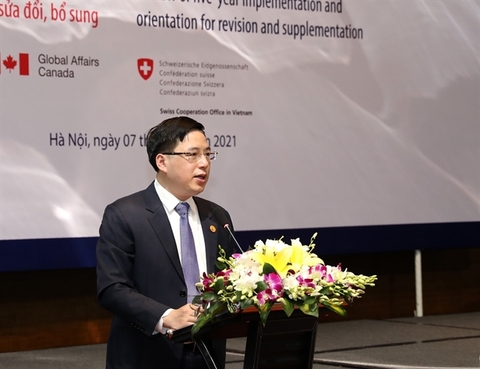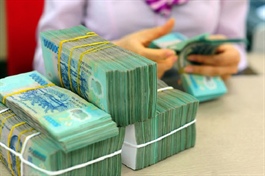HCMC's marine economy dream shouldn't become an environmental nightmare: Experts
HCMC's marine economy dream shouldn't become an environmental nightmare: Experts
Experts are cautioning that HCMC's long-standing marine economy development dream should not damage its "most precious green lung."
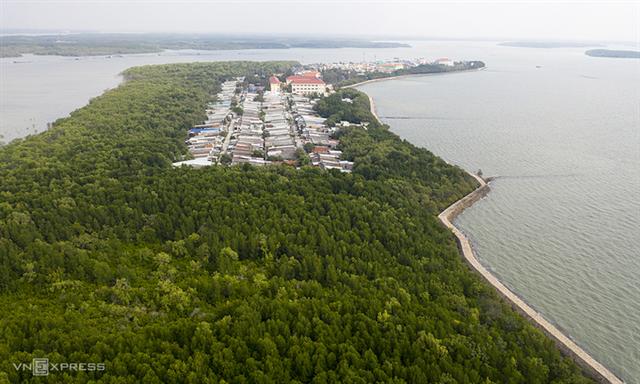
Part of Thanh An Island off Can Gio District, HCMC, April 2021. Photo by VnExpress/Huu Khoa.
|
Ngo Viet Nam Son, an architect with 30 years of experience in design consultancy and architectural planning, says that while developing the marine economy that it has been envisioning for the last 20 years, HCMC should not consider this primarily as a pillar for economic development.
He said that in the context of climate change, the coastal area of the southeast of Vietnam, which includes HCMC, its Can Gio District - the focus of the new development plan - and the Mekong Delta, have been listed among regions at highest risk of damage due to their population density.
Son said HCMC should only boost the development of the marine economy for Can Gio in areas where a large population is not required, like high-tech agriculture, marine tourism and fisheries.
If the city decides to increase the population in Can Gio, it will have to spend a lot of money building dykes and lifting traffic infrastructure once the sea level rises, he noted.
He also drew attention to the fact that boosting development in Can Gio means one of the nation's global biosphere reserve will lie between two highly populated urban areas, making it difficult to protect it.
"HCMC now has a very precious green lung in Can Gio, and we must find a way to preserve it," Son said, adding that the city should be careful and do multidisciplinary research when it targets the sea for economic development and plans to build an international "urban sea chain" by connecting Can Gio with Vung Tau in Ba Ria-Vung Tau Province and Go Cong Town in Long An Province.
With a coast length of 23 km, the district has an area of more than 71,300 hectares, 70 percent of which is taken by mangrove forests and waterways.
Son's concern about the reserve was echoed by Hoang Van Huay, former Deputy Minister of Science and Technology.
Huay said developing the marine economy and investing in port and urban areas in Can Gio was a right long-term direction that can contribute to ensuring regional security.
However, the investment projects for Can Gio should apply the most advanced technologies, he stressed.
"Can Gio should be developed with low-carbon urban areas to avoid affecting the biosphere reserve," he said.
A low-carbon urbanization approach would focus on curtailing the anthropogenic carbon footprint of cities by minimizing or abolishing the utilization of energy sourced from fossil fuels.
The potential and the vision

Farmers on a salt farm in Can Gio District, HCMC, April 2021. Photo by VnExpress/Huu Khoa.
|
Exploiting the socioeconomic potential of the marine economy via the Can Gio Bay has been a notion nurtured for decades, but it has begun to take concrete shape recently.
On December 29, 1978, following a proposal by Ho Chi Minh City, the National Assembly split Duyen Hai District from Dong Nai Province and merged it with the city, giving birth to Can Gio District.
Can Gio is the only coastal district of the city, lying around 50 km (31 miles) from its downtown area.
The municipal Department of Agriculture and Rural Development and the HCMC Youth Volunteer Force joined hands to grow mangrove forests in Can Gio. Four years later, mangrove trees had spread over 38,000 hectares (94,000 acres).
On January 1, 2000 the district’s mangrove forest was recognized as a global biosphere reserve by UNESCO.
Before 1983, waterways were the major mode of transportation in Can Gio. The district had only 13 km of roads then. In 1984, the city started to build a road running eight meters wide and 36 km long across the district. Called Rung Sac, the street opened to traffic in April, 1986 and was renovated in 2011 at a cost of VND1.5 trillion ($65 million) to make it the most important route connecting the entire district with the inner-city area.
Former city chairman Le Hoang Quan used to say that the construction of this road had contributed to completing the traffic network of HCMC towards its southern part.
The project works as leverage that creates a breakthrough in technical infrastructure development and accelerates economic growth, he said.
The idea of using Can Gio to help HCMC spread out to the sea for development began to take shape around 2002.
By then, the late Prime Minister Vo Van Kiet, who had paid much attention to the work being done to preserve and protect the mangrove forest of Can Gio, had written to HCMC, analyzing the benefits the city could enjoy by turning the coastal district into an urban area to serve tourism and entertainment industries.
PM Kiet said he believed "Can Gio could develop into an urban tourism area...that could be compared with Langkawi of Malaysia, Pattaya of Thailand, or Bali of Indonesia."
With proper development, the two famous coastal provinces, then, Quang Ninh in the north and Kien Giang in the south, could not keep up with Can Gio, he said.
"The only issue to create that breakthrough for Can Gio, and this lies in the hands of the city's managers."
Kiet's vision firmed up in a general development master plan until 2025 that was approved in 2010.
But directing the city's development towards the East Sea had been happening over the past 20 years with infrastructure planning and attracting investment for relevant projects.
The projects include: the 300 hectares Tan Thuan export processing zone that was built in 1991; the 750 hectares Phu My Hung urban area built in 1996; the 1,700 hectares Hiep Phuoc Industrial Park, also built 1996; the dredging of the Soai Rap River, contributing to completing the waterway infrastructure in the city’s southern part; and the 15.4 hectares Tan Cang - Hiep Phuoc Container Port, opened in 2010.
On June 12, 2020, Deputy PM Trinh Dinh Dung signed a decision to approve the adjustment of investment policy for a project to expand the urban tourist area in Can Gio. The project would cover 3,000 hectares (7,400 acres) and cost VND217 trillion ($9.4 billion).
This mega project is expected to work as leverage to unlock the potential of Can Gio, a dream that HCMC has cherished for decades.
Late last month, vice chairman Vo Van Hoan said at a city conference that HCMC has now decided to develop towards the sea and that the Can Gio Bay should help the city leverage a switch from a land-based to a sea-based economy.
"Identifying a strategic direction for the city to develop its marine economy and have marine urban areas connected with the global and regional economies has become an urgent need now," he said.
In a meeting with Can Gio authorities early this month, city chairman Nguyen Thanh Phong reaffirmed the city’s determination to "unlock the potential of Can Gio and at the same time minimize impacts and the bio biosphere reserves as much as possible.
"Can Gio is home to seas, forests, mountains and even islands and with a total area that could compare with Singapore, it has all the conditions to become a resort town providing eco-tourism services."





